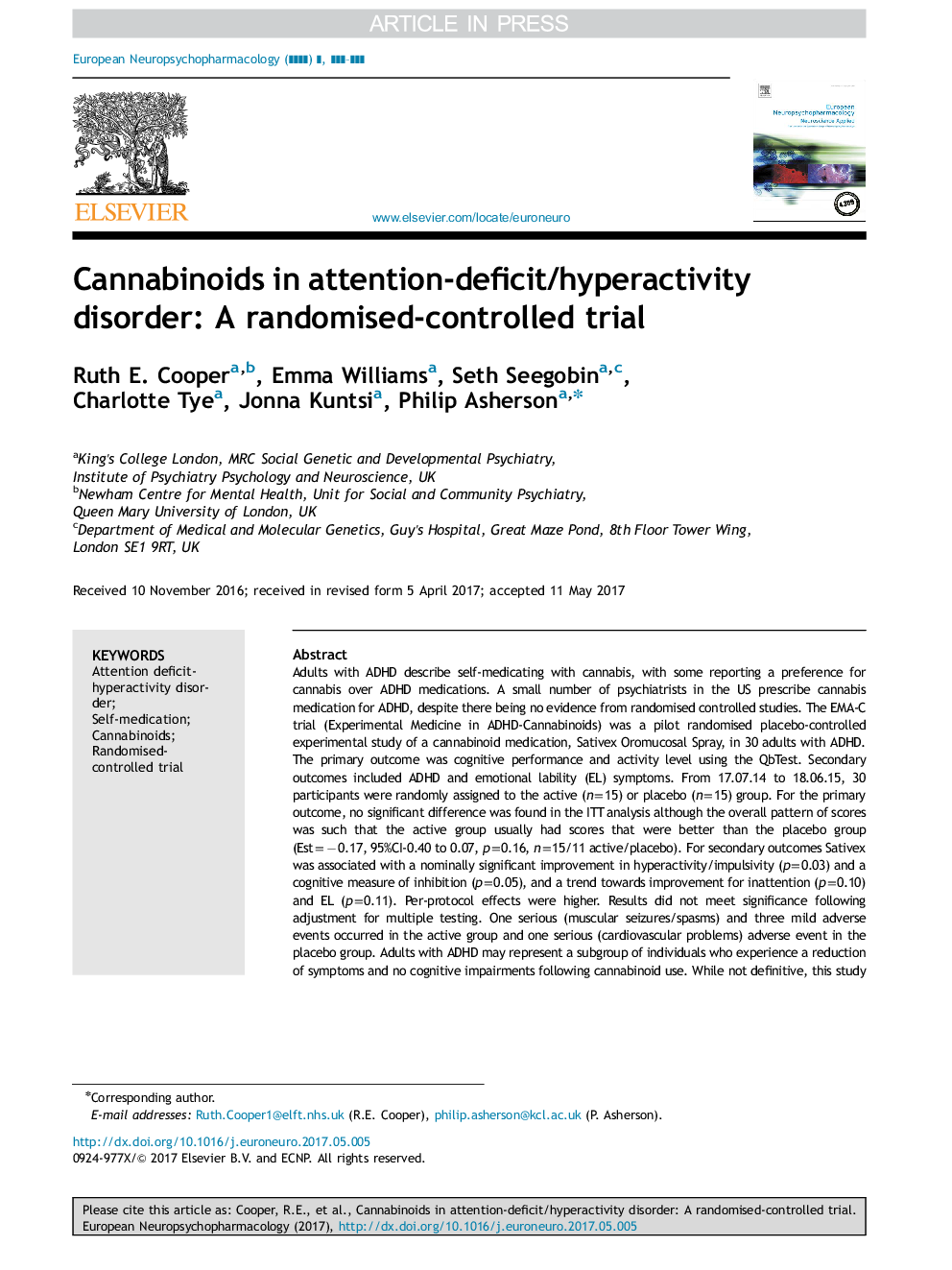ترجمه فارسی عنوان مقاله
کانابینوئید در اختلال کمبود توجه / بیش فعالی: یک کارآزمایی تصادفی کنترل شده
عنوان انگلیسی
Cannabinoids in attention-deficit/hyperactivity disorder: A randomised-controlled trial
| کد مقاله | سال انتشار | تعداد صفحات مقاله انگلیسی |
|---|---|---|
| 123789 | 2017 | 14 صفحه PDF |
منبع

Publisher : Elsevier - Science Direct (الزویر - ساینس دایرکت)
Journal : European Neuropsychopharmacology, Volume 27, Issue 8, August 2017, Pages 795-808
ترجمه کلمات کلیدی
اختلال بیش فعالی کمبود توجه، خود دارو، کانابینوئید، محاکمه تصادفی کنترل شده،
کلمات کلیدی انگلیسی
Attention deficit-hyperactivity disorder; Self-medication; Cannabinoids; Randomised-controlled trial;

